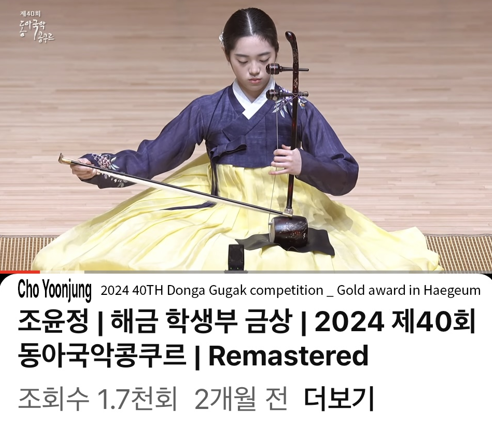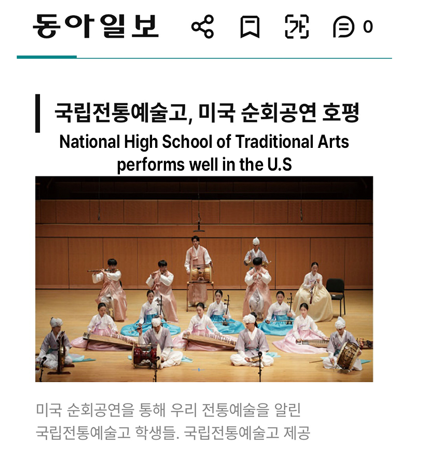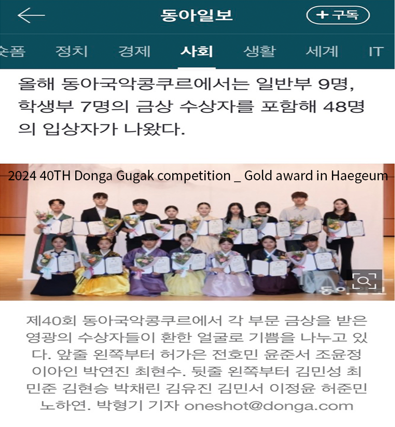
Gugak, Korean traditional music, refers to the music of Korea and translates to “the music of the nation.” Unlike Western classical music, gugak is characterized by its soft, emotional melodies that echo the sounds of nature. With a history spanning centuries, gugak embodies Korean emotions and culture, featuring a unique tone and rhythm that harmonizes with the natural world. It is not merely a genre of traditional music but an art form that encapsulates Korea’s history, emotions, and identity.
In gugak, the performer’s emotional expression and improvisation hold greater significance than a strict musical score. Unlike Western music, which follows a steady beat, gugak flows naturally, alternating between slow and fast tempos. Additionally, it employs a pentatonic scale (gung, sang, gak, chi, woo) rather than the heptatonic scale (do, re, mi, fa, sol, la, ti) used in Western music, giving it a more fluid and delicate sound. Gugak can be broadly categorized into court music, folk music, and religious music, each played with various instruments and techniques. While preserving its traditional essence, gugak has also evolved with modern influences. The fusion of gugak with contemporary music has gained popularity, with fusion gugak bands blending Korean and Western elements. Even global K-pop icons like BTS and BLACKPINK have incorporated traditional Korean music into their performances, making gugak more accessible to wider audiences.

Among the many traditional Korean instruments, the haegeum stands out as a two-stringed bowed instrument often likened to the violin. Due to its small size yet versatile range—from high to low notes—it is sometimes referred to as the “Korean violin.” However, unlike the Western violin, its bow is placed between the strings, allowing the performer to move it back and forth to produce sound. The haegeum’s tone closely resembles the human voice, evoking deep emotions and a sense of sorrow. This unique quality makes it suitable for both traditional and contemporary music, leading to its frequent use in K-pop, film scores, and fusion gugak compositions.

A rising star has recently emerged in the world of haegeum. Cho Yoon-jung, a next-generation haegeum virtuoso, is illuminating the future of Korean traditional music with her mesmerizing performances. She gained recognition as a leading talent in the Korean classical music scene by winning the gold prize in the haegeum category at the prestigious Dong-A Gugak Competition—one of the most respected competitions in the field. This achievement signifies her exceptional skill and artistic excellence.
Cho is redefining the possibilities of the haegeum by mastering traditional techniques while incorporating a modern sensibility. “I want more people to experience the beauty of the haegeum,” she said, expressing her passion for bringing Korean traditional music to the global stage. With unwavering dedication, she is poised to captivate audiences not only in Korea but worldwide. As she bridges tradition and modernity, her music will undoubtedly touch hearts across borders. The world eagerly awaits the next chapter of her haegeum journey.
SALLY LEE
US ASIA JOURNAL



